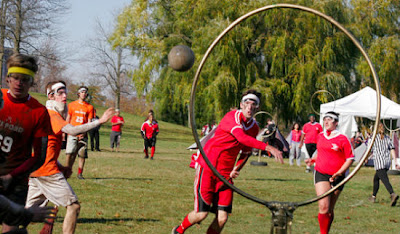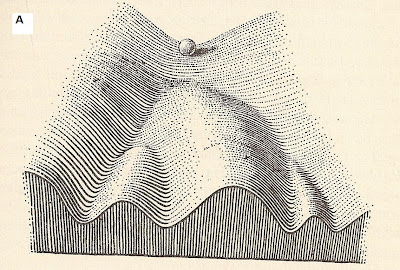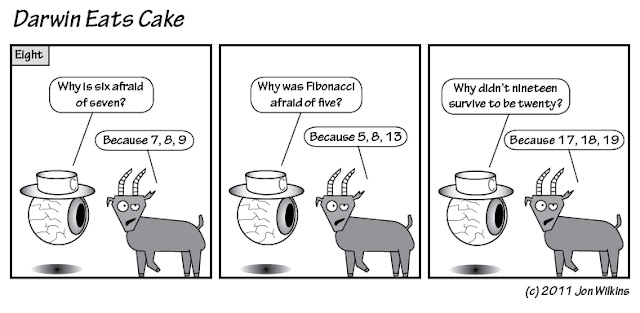So, a couple of days ago, Jesse Bering published an interesting post on his Scientific American blog, where he attempts to revive interest in a research topic that was hotly debated in the mid 1990s, but has since fallen dormant. He describes a debate between two evolutionary psychologists – Gordon Gallup and John Archer – over the evolutionary origins of negative attitudes towards homosexuality.
Bering does an excellent job describing the debate, so I will just provide the briefest synopsis here. Gallup argues that, all else being equal, natural selection would favor negative attitudes towards homosexuality. The argument is basically that people who encourage heterosexual behavior in their children will have more grandchildren. The counter-argument championed by Archer is basically, no, it’s all cultural: homosexuals are identified as “other” and are demonized in the media.
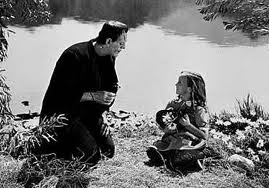 |
| Silly girl is so unfamiliar with cultural norms, she does not even recognize that she should be vilifying anyone who looks different from her. |
Bering’s stated purpose is to stir up some debate, and hopefully to prompt some new research. He takes the position – the correct one in my view – that we should not refrain from asking such questions out of fears driven by political correctness. However, the thing that caught my attention, and prompted my to write my own response, was his opening paragraph:
Consider this a warning: the theory I’m about to describe is likely to boil untold liters of blood and prompt mountains of angry fists to clench in revolt. It’s the best—the kindest—of you out there likely to get the most upset, too. I’d like to think of myself as being in that category, at least, and these are the types of visceral, illogical reactions I admittedly experienced in my initial reading of this theory. But that’s just the non-scientist in me flaring up, which, on occasion, it embarrassingly does. Otherwise, I must say upfront, the theory makes a considerable deal of sense to me.
This, in a sense, encapsulates exactly what is wrong with so much evolutionary psychology. I don’t mean that as a criticism of Bering, who writes conscientiously and consistently well about a host of tricky topics. In fact, what I am doing here is a bit unfair to him, but I want to make a lot of hay out of that last statement: “the theory makes a considerable deal of sense to me.”
Back in the late 1970s, evolutionary biology was rent by a conflict over sociobiology. The debate was perhaps at its hottest and most divisive at Harvard, where the author of the book Sociobiology, E. O. Wilson, and two of its strongest critics, Richard Lewontin and Stephen Jay Gould, were all on the faculty. The debate focused particularly on the use of adaptationist reasoning to describe the origins of human behaviors, but it had methodological implications that reverberated throughout evolutionary biology.
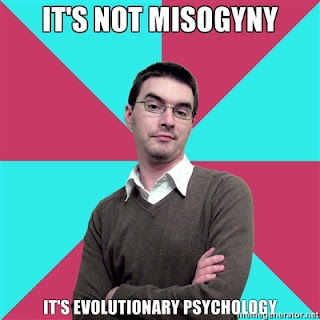 |
| Like sociobiology before it, evolutionary psychology has been accused of using the veneer of objective science to promote a socially conservative agenda, reinforcing social norms. Image via imageshack. |
I won’t go more into the history here, but if you’re interested in a highly entertaining historical account, which delves particularly into many of the biggest personalities involved, I highly recommend this article, published originally in the sadly now defunct Lingua Franca.
As with many such schisms, the field eventually healed, primarily through retirement and replacement. Nowadays, most practicing evolutionary biologists take a more synthetic view, one that integrates the ambitions of the sociobiology program with the demands of a more rigorous scientific foundation demanded by the critics.
Basically, the lessons of the whole sociobiology episode boil down to this: plausibility is NOT scientific proof.
In fact, it is trivially easy to come up with a plausible-sounding evolutionary argument to describe the origin of almost any trait. More importantly, it is often just as easy to come up with an equally plausible-sounding argument to describe the origin of a hypothetical scenario involving the exact opposite trait.
If you have students, you can try this little experiment, which provides a nice learning exercise for the students as well:
Divide your class into two groups. Give one group a card that describes a pattern of behavior of the form: “In species X, the females do Y, and the males do Z.” Tell them that their job is to work together to come up with an evolutionary argument for why the females do Y and the males do Z. A group of a few modestly engaged undergraduates will have little trouble constructing such an argument. The argument will likely seem plausible on its face, and the students will probably emerge from the exercise convinced of its correctness.
Give the other group the same exercise, but with the modification that their card says that the females do Z and the males do Y. You will likely find that this group also has little trouble coming up with a plausible explanation, and that they will also be convinced of its correctness. For extra fun (for you, anyway), have the two groups come back together to debate the evolutionary question, but don’t tell them at first that they were given opposite patterns to explain.
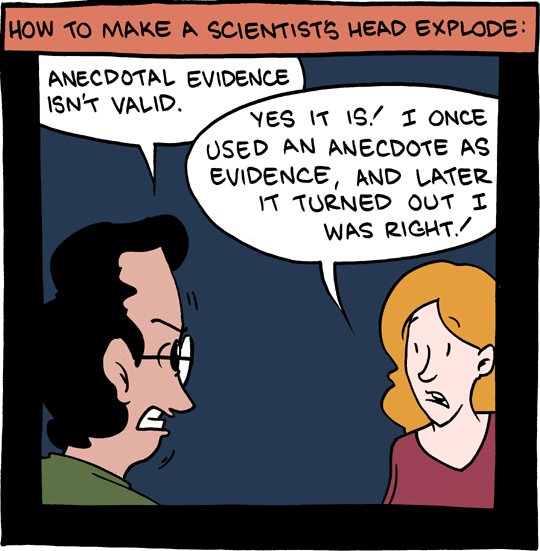 |
| If you can create a set of journals in which you can publish evolutionary claims with no requirement that any of those claims be scientifically tested, eventually, you can generate a whole parallel literature that is self-citing, a group of researchers that are self-refereeing, and review panels that are self-funding. Congratulations! You’ve just invented an academic perpetual motion machine! |
The problem with much of the early work in sociobiology was that it was based on assertions of plausible-sounding mechanisms, where not enough thought was put into consideration of alternative scenarios. One of the dangers is that the plausible-sounding mechanisms that most readily come to mind are often those that resonate with the cultural norms in which we are all immersed. This is part of the reason why molecular evolution has focused so much over the past few decades on statistical tests to look for evidence of natural selection.
While most evolutionary biologists have taken on board the cautionary tales that emerged from the sociobiology debate, most evolutionary psychologists are not evolutionary biologists. When evolutionary psychology started to become a field in the early 1990s, it basically recapitulated many of the errors of early sociobiology. It deflected criticism by claiming that politically correct academics didn’t want them to ask these questions, painting itself as a field of martyrs who were bravely trying to do science, when the actual criticism was that the science was bad.
Evolutionary biology is one of those areas, like linguistics or sociology or film, where many people have some basic understanding or exposure, and so they tend to assume that they have an expertise on the topic, and that there is nothing more to understand beyond what they know.
 |
| Evolutionary psychology is to evolutionary biology as physics is to everything. |
I would not want to criticize Gallup’s methods, nor his results, insomuch as they relate to psychology. However, the leap to the evolutionary argument is complete nonsense. That is not to say that he is not right. He might be. It simply means that the studies that are the focus of the debate do not contain the information required to construct and test an evolutionary argument as a scientific question.
Gallup’s premise is that an impulse to discourage homosexuality in one’s children would be evolutionarily favored. Fine. The argument is supported by surveys about parents’ levels of discomfort with homosexuality in different scenarios, specifically that they are less comfortable having their children exposed to homosexuality at age 8 than at age 21, and that they are more comfortable with a homosexual brain surgeon than with a homosexual pediatrician. Again, Bering does a nice job of describing the studies and the arguments against them, and I won’t reproduce those here.
I will just note (as Bering does) that this interpretation hinges on the assumption that exposure to homosexuals at an early age increases the likelihood of growing up to be homosexual. Gallup has some evidence to suggest that this might be the case, although we could easily put forward, for example, the “exotic becomes erotic” theory, which might be interpreted as suggesting that early exposure to homosexuality would decrease the erotic appeal of homosexuality in later life.
Basically, the structure of Gallup’s argument is that his studies show that A * B > 0. He wants to conclude that A > 0. Therefore, he asserts that B is probably greater than zero.
The problem is that the claim that A > 0 sounds plausible. Having straight kids gives you more grandkids. Makes sense, right? Therefore, we don’t demand a real test to figure out what B is.
Let me throw out a few alternative evolutionary stories:
1) Parents should want their own children to be straight, but they should support a culture that is broadly supportive of homosexuality, thereby reducing the number of children that other people’s children have. That would reduce the competition faced by their own grandchildren, giving them more great-grandchildren.
2) Parents should favor sex-specific homosexuality in the general culture, facultatively based on the sex ratio among their own children. Parents with lots of sons should favor male homosexuality in the broader community, but should disfavor female homosexuality, in order to maximize the number of mates available to each of their sons.
3) Parents should favor having their older children be homosexual during the early part of their lives, so that they stick around and help to raise the younger children, but once the younger children are old enough to fend for themselves, they should want all of their children to be straight.
Do any or all of these sound plausible to you? Maybe they do, or maybe they don’t. However, my point is that it does not matter. Whether some or all or none of these sound plausible to us depends a lot on the cultural milieu we inhabit, and almost nothing to do with the actual evolutionary origins of human sexual orientation.
It would be straightforward to construct mathematical models to support any of these verbal arguments. The key to turning this into science is to construct those models and see what other implications they have, and to look for evidence that supports or contradicts those other implications. The key is to measure what B is. The key is to uncover the genetic and neural mechanisms that underlie sexual orientation, and to subject those mechanisms to a rigorous statistical and molecular analysis. The key is to consider as broad a set of hypotheses as possible, and to be creative in identifying tests and observations capable of differentiating among those hypotheses.
I’m with Jesse Bering in hoping that there will be more research on this topic in the future. But I would add the caveat that if the research is done by psychologists in isolation, it will ultimately go nowhere, even if they are evolutionary psychologists. What is needed is a broad, transdisciplinary collaboration involving psychologists, for certain, but also evolutionary biologists, neuroscientists, anthropologists, sociologists, and who knows what else.
Gallup GG Jr, & Suarez SD (1983). Homosexuality as a by-product of selection for optimal heterosexual strategies. Perspectives in biology and medicine, 26 (2), 315-22 PMID: 6844119








